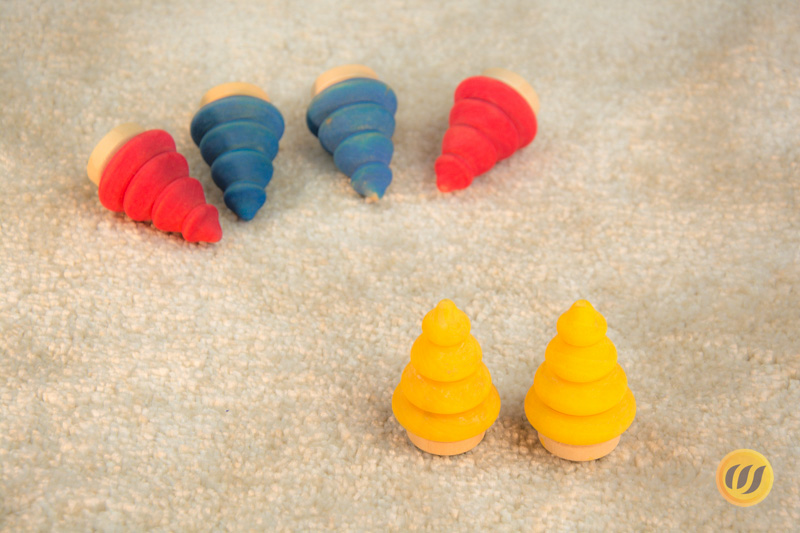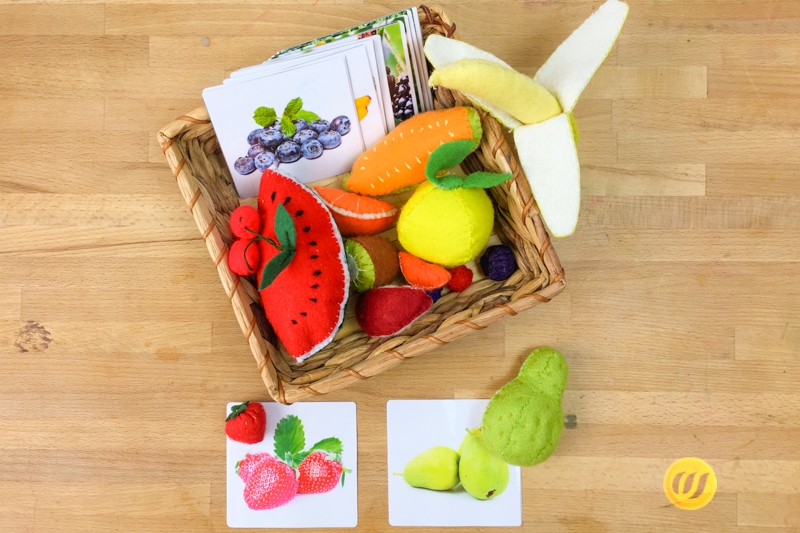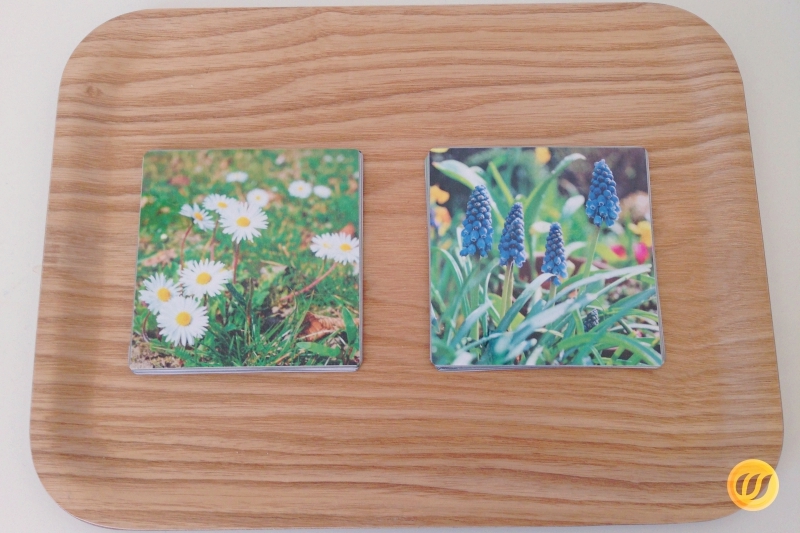Every child enjoys matching games - the difficulty level can be varied.


Introduction
Matching games satisfy two needs little children have: their sense of order and the need to classify, explore and specify their environment, that is why matching games are liked by most.
Which skills are being supported in their developement?
- The developement of visual differentiation, which supports learning how to read
- concentration (which calms down the child and makes happy)
- movement from left to right
- sense of order, which builds up the skill to categorize and sort
- showing knowledge and aquire new knowledge (vocabulary)
- problemsolving and critical thinking
- memory
General:
- Depending on the child matching games could be of interest from approximately 15 months onwards, the first stage with real identical objects could possibly already be of interest from 12 months on.
- Start with about 4 objects and work your way up.
- The child should be a little familiar with the objects, which are offered for matching.
More information about sorting games you will also find at "How we Montessori" and "The Kavanaugh Report".
You can help us making the Wunderwerkstatt more beautiful. If you buy something through our affiliate links, you support us effectively.

Object - object matching
Level 1: offer a basket or tray with two identical objects each. For example animals, matchbox cars, shells, kitchen utensils.
Level 2: offer a basket or tray with 'families' for example animals, colours, shapes


Object - picture matching
This level supports a new skill. With this kind of sorting stage the beginnings of abstraction can be explored.
Level 1: Image and an exact photograph of it (ideally even in the same size), for example Schleich animals (or a little cheaper Safari), fruits, household items or natur materials and photographs of them.
Level 2: Image and a similar photograph, for example a Schleich animals and a real animal photo, felt fruits and photographs of real fruit, sights and landmarks and a real photo of them.

Picture - picture matching
This kind of exercise is the highest level of difficulty, because the distinction is made only with the eye and no other of the senses can be used to help.
Place the card pairs into a bowl. Spread the first pile into a row, take the second pile from the bowl, look and check if it fits together.
In our download section you will find different printables and 3 part cards, which can be used well for matching games (for example fruits, spring blooming flowers, vegetables, landmarks).
If matching games are enjoyed a lot, but all the levels have been mastered already, the degree of abstraction can be raised. You can match similar images. Two different images of the same animal or photographs of spring blooming flowers and drawings of the same flowers.
No time to make your own?
There are no readymade alternatives, but you can start with these:
Next step: deepening knowlegde, following interests:
- Interests: Vocabulary
- Skills: Categorization Abstraction Memory concentration
- Type of play: Matching game
- Sensitive Period: Sensitivity for Language
